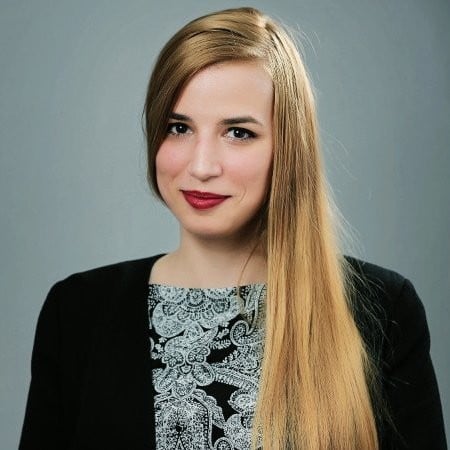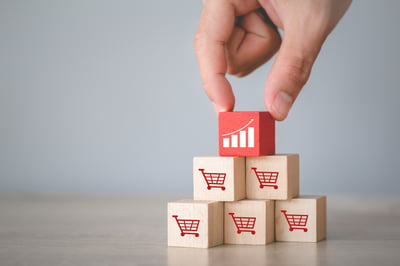June 6, 2025
 by Bryan Belanger / June 6, 2025
by Bryan Belanger / June 6, 2025

Product-led growth (PLG) has become one of the most important and pervasive topics in SaaS.
PLG refers broadly to a strategy in which a company puts its product(s) at the center of its organizational strategy. Companies that embrace PLG are outperforming industry benchmarks for financial performance and customer satisfaction.
The definition of product-led growth is often simplified in the public discourse to “offering a free version of your SaaS product". But in practice, PLG is much more complex. What’s more, there’s an unsung hero that’s the beating heart of PLG: pricing.
Choosing the right SaaS pricing strategy is crucial for PLG success. Whether you're a startup seeking affordable pricing apps, a medium-sized tech firm optimizing revenue, or a SaaS enterprise aiming for scalable pricing platforms, the right approach hinges on aligning pricing models with your product’s value and usage metrics.
This guide breaks down packaging tiers, usage-based models, and tools that help shape your PLG pricing roadmap, especially for software companies, subscription businesses, and service providers.
OpenView Partners, a Boston-based venture capital firm, is generally considered the first to coin the concept of product-led growth. In a piece first published in May 2022, OpenView identifies 11 key principles that define a PLG strategy.
Three of the 11 principles OpenView outlines are specifically focused on SaaS pricing. These include:
Clearly, OpenView sees SaaS pricing and monetization as a central element of the industry’s shift to PLG. But why?
For starters, there are only so many levers you can pull to pursue growth for your SaaS. You can acquire new customers, sell more “stuff” to existing customers, or increase average revenue per user through pricing increases.
Pricing is usually the forgotten lever, but it's the one with the biggest impact on performance. In fact, a 1% improvement in pricing can translate to an 11 %+ increase in margins. That’s why startups and scaling teams are increasingly turning to pricing optimization software, especially those targeting subscription businesses, software platforms, and tech service companies, to unlock better monetization from day one.
PLG is centered on growth, so it makes sense that pricing is becoming more of a focal point of the growth strategy for companies embracing the strategy.
Companies are evaluating SaaS pricing strategies to ensure they support OpenView’s other key PLG concepts, such as “build for the end user,” “build to be discovered,” and “delivery instant product value.” As these concepts suggest, customers must experience instant value in a PLG world—low or no-friction engagement models that quickly onboard users are a requirement.
Traditional sales-led approaches often require multiple rounds of calls, demos, chats, or email exchanges before a customer receives a price. That approach doesn’t work in PLG. The shift to PLG demands new approaches to pricing transparency and pricing strategy. For PLG-aligned companies, especially in the SaaS and software industries, selecting the right pricing software for small tech businesses or app-based platforms is no longer optional — it’s foundational.
Product-led SaaS pricing isn’t just about following the crowd and offering a free product or deploying usage-based pricing (UBP). It’s about making a set of interrelated decisions on a product packaging model strategy and pricing model strategy to optimize for the needs of your ideal customers.
There’s a lot of work to be done before you come up with packaging. You need to figure out who you’re helping (your customers), what problem you’re trying to solve for those customers, and what product you are offering to solve that problem. You need to analyze the value solving that problem creates for the customer.
We’re going to assume you’re through those gates. You’ve identified an audience, a problem to solve for that audience, and you’ve crafted a solution to that problem in the form of a SaaS product.
One of the first key decisions you must make is packaging, or how to assemble and structure your product for sale to your target customers. As with SaaS overall, there are a number of elements you must consider in designing PLG-friendly SaaS packaging:
The first decision you must make is how to structure your product for sale. Will you offer a single package or multiple plans? Or will your product be sold a-la-carte? Will you offer add-ons? This set of decisions refers to your tiering strategy.
Most SaaS companies use a tiered packaging strategy, in which a single product is sold in multiple plans with different entitlements to usage and features.
The term “good-better-best” refers to a packaging strategy in which you offer three product tiers, with each successive tier offering more usage or features for a higher price. The entry-level tier is the most affordable and is “good”, the middle tier is “better” and fits most customers, and, you guessed it, the most expensive tier is “best”.
A tiered packaging strategy with three “good-better-best” tiers is the most common packaging model for SaaS, including PLG SaaS companies. That’s a good place to start, but it’s not enough to just go along with the crowd.
You should define your tiering strategy based on your customer segmentation. You could have a single product offering or as many as 10 or 12 tiers. You should have a product package that is designed to serve each of your product’s key customer segments.
Many SaaS businesses, ranging from early-stage startups to medium-sized service companies, begin by exploring affordable pricing software that supports multi-tiered models. Whether you’re evaluating tools that help define “good-better-best” offerings or looking for the top-rated pricing platforms for subscription businesses, a software-enabled tiering strategy helps you scale with clarity.
Another consideration in packaging is whether or not you will offer a free tier of your product. A free tier can be the “good” offering in your “good-better-best” packaging structure or another tier in addition to your paid “good-better-best” tiers.
The decision on whether or not to offer a free tier is as much a decision about the nature of your product and your company’s customer acquisition goals as it is a pricing decision.
You have a SaaS product, and you’ve defined the customer segments you need to serve with your product. Your product offers certain features that are available to customers. How do you decide which features to offer to which customers?
This challenge refers to tier definition – how you define the “content” of each of your product plans to suit the customer segment(s) that each plan is intended to serve.
There are basically three options for how a SaaS product plan is structured: features, usage, or a combination of the two.
The concept of “usage” is central to establishing a SaaS packaging strategy for product-led growth. PLG or not, software entitlements to features commonly increase for more expensive plans of a given product. But in PLG, the concept of usage, alternatively called consumption, is at the forefront – after all, a key tenet of PLG is to monetize based on usage.
We find that most product-led SaaS companies design their product plans around a combination of features and usage factors. Typically, they set limits on consumption around 3 to 5 key usage factors.
Free and lower-cost entry-level plans typically have more usage factors than more expensive plans, and more expensive plans are often entitled to unlimited usage across more or all usage factors.
There are also many linkages here to pricing – you can’t design packaging in a vacuum. Good pricing starts with analyzing value. Part of analyzing value is determining value metrics, or the units that measure how your customer gets their perceived value from consuming your product.
The value metric becomes the foundation of how to determine a pricing metric, which is the unit(s) used to charge your customer for your product. The value metrics not chosen as your pricing metric typically become those usage factors that define the limits of each of your product’s plans.
Determining your SaaS pricing model strategy is the other key foundation of establishing a product-led SaaS pricing strategy.
Product-led pricing model strategy involves determining how you will price your product to your target customers. This involves defining a number of elements associated with how you will price your product, which are interrelated to one another, and considering your product packaging decisions as well.
Key elements you’ll have to determine include:
One of the most important of these decisions is your chosen pricing model, as this will define how you monetize your product and will also help determine how you set up the other elements of pricing described above, such as your critically important value and price metrics.
Before choosing one, many companies compare different pricing management tools tailored to their size and industry. For example, SaaS pricing apps for small businesses, optimization software for midsize firms, or enterprise-level pricing platforms.
You have the following product-led SaaS pricing models to choose from:
In a flat-fee model, the customer pays a recurring, predefined monthly, annual, or other term subscription fee for access to a defined product and tier. The pricing metric in a flat-fee offering is structured into the usage factors that are used to define each plan of the offering.
EXAMPLE: You pay $100 per month for the “Gold” plan of a product, which provides you with up to 100GB of storage. In this case, the GB of storage is the pricing metric.
Per-user, or seat-based, pricing is a model in which the customer pays a recurring, predefined monthly, annual, or other term subscription fee for each user that has access to a product and a given tier of that product (if applicable).
Per user is a broad category of pricing models that encompasses more specific definitions of “user”, such as active users, agents, employees, or any model where each individual user of the software must pay for access to the software.
Per-user models are often used in combination with a tiered packaging strategy. In a per-user model, users are the pricing metric.
A usage-based model is a pricing structure in which the customer pays for what they use. Usage is defined and metered based on a pricing metric(s).
Usage-based models are commonly structured as pay-as-you-go, in which the customer is billed in arrears on a monthly basis for actual usage. Usage-based models can also use credits or similar structures to charge based on usage but require a term-based subscription.
A hybrid model is a combination of one or more of the above pricing models. Common hybrid strategies include dual price metrics as well as overage pricing.
In a dual pricing metric strategy, a customer may pay a foundational flat-fee or per-user license, and then a usage-based fee for consumption of a particular feature. With overage pricing, a customer typically pays a flat-fee or per-user license for a defined plan, and that plan allows the customer a specified amount of usage.
If the customer exceeds that usage, they pay for the overage on a usage basis. The customer in this scenario may choose to pay the overage fee or upgrade to the next tiered plan to access higher consumption limits
EXAMPLE: A software license allows users to store up to 500 marketing contacts per month. The user must pay the overage fee per every 100 additional contacts.
With all of these interrelated choices for SaaS packaging and pricing, it can be difficult to know where to even start when it comes to establishing the right model for product-led growth.
You may see and hear the buzz about “monetizing based on usage”, but aren’t sure if that model makes sense for you, or what it really even means for your product context.
When you find yourself with this challenge, it can be helpful to learn from what your direct and aspirational peers in the market are doing.
In a recent study called PLG Pricing: Seats and Usage, PeerSignal and XaaS Pricing analyzed this topic by breaking down the packaging and pricing models of 125 SaaS vendors that PeerSignal classified as PLG leaders.
The companies included in PeerSignal and XaaS Pricing's study ranged from startups to established public companies. The companies studied address a broad range of SaaS categories.
Here’s what the research discovered:
These results suggest that if you are a product-led SaaS company, whether a startup looking for best value pricing tools, a software business refining its model, or a large enterprise modernizing its approach, you’ll likely explore a combination of usage-based pricing and scalable packaging.
For most, the above framework offers a good place to start when shaping a product-led SaaS pricing strategy. But you must also consider the state of your product-led journey and the goals of your pricing strategy.
While there are clear norms in how leading product-led companies are approaching pricing strategy today, product-led SaaS pricing strategy is not a static effort.
Pricing is dynamic and never finished. Leading product-led SaaS providers started at different places with their pricing strategies and will continuously iterate on pricing and packaging to optimize for product-led growth.
No matter your growth stage, selecting the right tools can shape your trajectory. That’s why companies often ask, "What’s the leading pricing strategy software?" or "Which pricing tools do top SaaS companies and enterprises use?" This roadmap helps contextualize those decisions.
There are four stages of a pricing and packaging strategy that you’ll progress along as you pursue product-led growth for your SaaS product. Depending on your offering, customer preferences, market category norms, and competitors, you may have a different starting point and a different ending point.
It’s important to understand the journey and the options, so you can align your product and business to a product-led SaaS pricing roadmap that is optimal for your goals.
The center of product-led pricing strategy is the concept of monetizing based on usage. The journey states that concept as a central driver. Stages of the product-led SaaS pricing roadmap include the following:
Just like it sounds, with this type of model, you don’t price with a usage-based pricing model, and you don’t have any usage elements incorporated into your packaging strategy. This model is usually best for products with per-user pricing where everyone in the organization is intended to be a user.
A good example is Lattice, a provider of employee engagement software. This model is typically a starting point and ending point for companies that are unlikely to deploy a usage-based model.
This is the predominant model among today’s product-led SaaS leaders. With this model, you have traditional subscription pricing with a flat-fee or per-user pricing model. You define clear tiers of your product (typically three to five), with each tier imposing limits on consumption.
Tiers are defined around a clear pricing metric that ties to your value metric, and a small number of other critical usage metrics. This model incentivizes customers to upgrade when they need more features or users, as well as for usage when they exceed the imposed limits of their selected plan.
This model uses the same tenets of the previous model but applies additional charges based on usage-based pricing. Most commonly, these additional charges are for overage.
EXAMPLE: A business intelligence software company may charge a flat-fee or per-user price for a given plan and impose a plan tier limit of published dashboards.
With this model, the company would then charge an overage fee per additional published dashboard. Other variants of this model use the same structure but apply different rules for what triggers the conditional usage-based pricing.
A common example is feature-based pricing, such as that used by Stripe or others in the payments market. There is a base charge and other charges that are enabled based on situational usage of those features. These are different than add-on products in that they can be dynamically enabled or disabled on a transaction-by-transaction basis.
This refers to a model in which the company prices solely based on usage.
The first step is to ensure that your organization properly defines what being product-led means for your business. Being product-led is a company ethos that extends well beyond pricing and impacts all facets of your business.
As with product-led SaaS pricing, there are many options for being product-led. You need to understand which operating model works for your business, what the dependencies are, and how pricing fits into that equation.
When it comes to determining your pricing and packaging strategy, choosing the right approach really comes down to
Pricing is a difficult function because there’s typically not a single owner. This is especially true for startups and early-stage companies. Pricing is either no one’s job or everyone’s job. To succeed with product-led pricing, it’s really important to establish clear roles and accountability.
You should think of pricing as a process, not a project. It’s impossible to ever be “finished” with pricing. Markets move, customer expectations change, and you need to adapt your pricing strategy accordingly.
Once pricing ownership and roles are defined, you need to define a process for how your company will evaluate and make pricing decisions. A key element of this is also defining how you will prioritize the pricing challenges you tackle (of which there will be many).
There is no single script to follow. It will depend on your company. But establishing a process mindset and building systems that allow for regular evaluation of pricing will set you on the right path.
With people and processes established, it eventually comes time to do the actual work and conduct pricing research.
Many companies guess at pricing. You’ll differentiate by doing your homework. This means doing as much customer, competitor, and market category research as you can within the realistic constraints of the resources, budget, and timeline that you have.
Before you can set pricing, you need to understand, measure, and manage your product’s value. Value sets the context for pricing, and helps you establish key elements of your offering, such as your value metrics, which guide your pricing metrics. Value definition and management is a broad concept that is a critical starting point for establishing a pricing strategy.
In defining value and establishing pricing, you need to monitor your overall category, direct competitors, and aspirational competitors to anchor you in the reality of what is happening in the market.
Customers contextualize your SaaS product based on its positioning. Every market has discount and premium players. Differentiating the ways you package your product, or the pricing models you use is a strategic decision that will require defining positioning, and then effectively communicating that positioning to customers.
Lastly, you need to talk to current and prospective customers to help inform your packaging and pricing strategy. Again, this depends on who you are and where you’re at—it may include conducting a handful of interviews or executing a quarterly global pricing survey program with thousands of surveys.
However, don’t let your customers lead you astray – your customers will have biases that they introduce that need to be managed.
You’re at a significant advantage if you’re talking to customers to understand perceived value, as well as preference for features and different pricing models.
Combine that insight with insights from top-rated pricing software tools that help test, refine, and track the impact of pricing experiments. Whether you need a pricing app for startups or an enterprise-level platform, integrating software into your process can accelerate strategic clarity.
Each of these steps warrants a separate post, and there is great reading available to get you started. If you establish people and processes, work around common goals, and adopt a research mindset, you’ll be on the road to effective product-led SaaS pricing.
Small tech businesses often benefit from lightweight, affordable pricing tools that support usage-based models and quick iteration. Look for platforms with intuitive UI, segmentation support, and integration with CRM or billing systems.
Startups typically lean toward pricing platforms that offer flexible tiering, freemium setup support, and real-time usage analytics. These help align early growth with user value delivery.
Mid-sized companies require tools that support A/B testing, value metric mapping, and forecasting. Pricing optimization software like Price Intelligently or PROS can provide scalable insights at this stage.
Enterprises often use robust platforms such as Vendavo, Zilliant, or PROS that support AI-driven pricing, large-scale segmentation, and deep integration into ERP and CPQ systems.
Service-focused companies, especially those with high client volume or project-based pricing, benefit from tools that offer rate card management, time-based billing, and customer segmentation features.
According to G2 reviews and industry benchmarks, tools like Paddle, Chargebee, and ProfitWell consistently rank high for SaaS-specific pricing strategies.
Yes, especially in the SMB market, tools like Stripe Billing, Recurly, and Zoho Subscriptions provide cost-effective ways to manage tiered or usage-based pricing models.
Product-led growth is a disruptive and transformational trend that defines how individuals and companies buy software.
Pricing is an unheralded focal point at the center of product-led growth. This growth emphasizes low friction, immediate value, and monetization aligned to usage, which, in theory, is better aligned to value received.
Establishing a pricing roadmap for your company’s product-led growth strategy journey will help align you to customer demand and most effectively pursue your growth ambitions.
Name your price (and your strategy). Pursue product-led growth and determine the right price points with pricing software.
Product-led growth (PLG) is a go-to-market strategy that centers on the product.
 by Ioana Sima
by Ioana Sima
Few things will influence a business' revenue as much as getting the pricing right.
 by Kristina Žiaukė
by Kristina Žiaukė
In the world of SaaS, a new strategy has emerged that's turning traditional sales models on...
 by Yaakov Carno
by Yaakov Carno
Product-led growth (PLG) is a go-to-market strategy that centers on the product.
 by Ioana Sima
by Ioana Sima
Few things will influence a business' revenue as much as getting the pricing right.
 by Kristina Žiaukė
by Kristina Žiaukė


